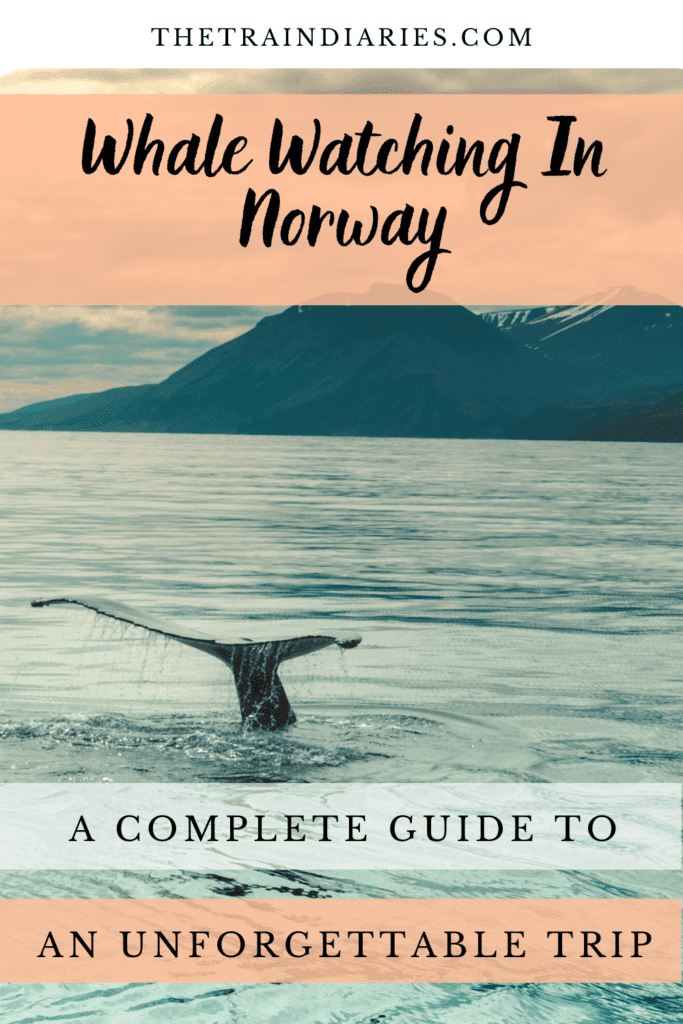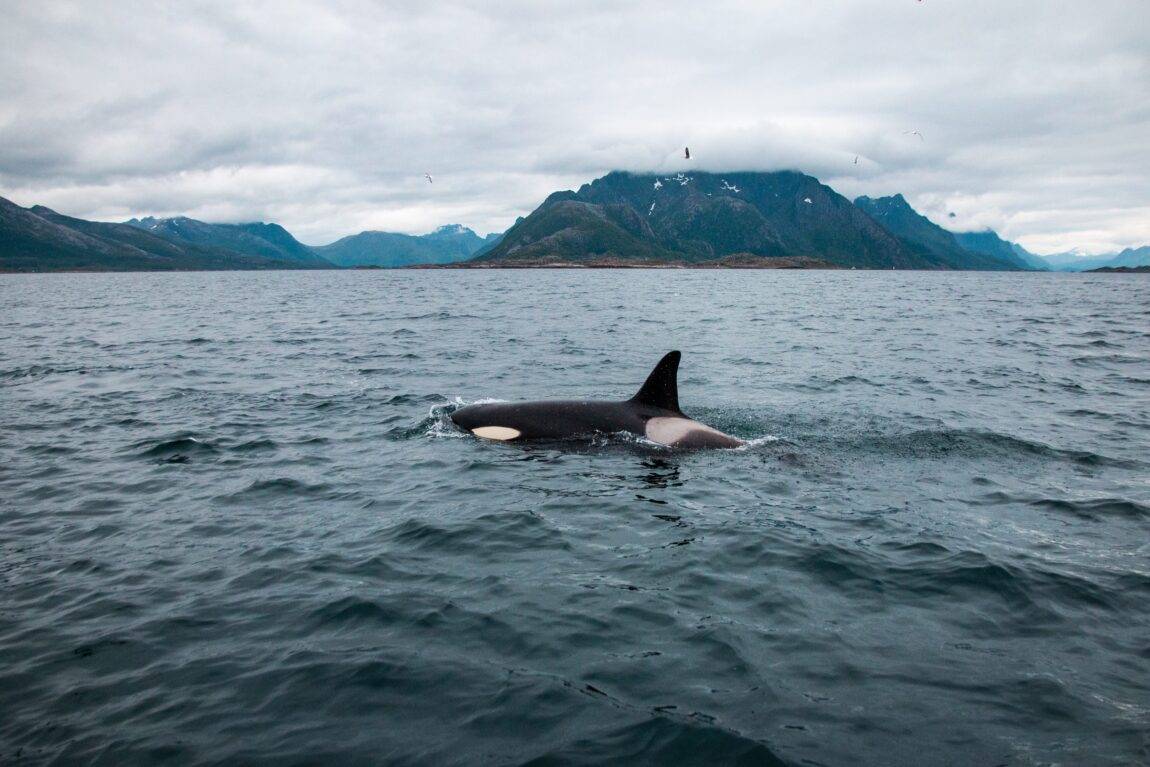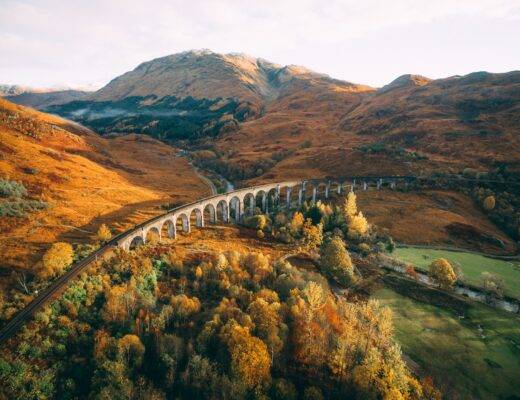Whale-watching has become an increasingly popular recreational activity in several countries around the world, with an ever-increasing number of travelers wanting to live such an experience. And even if not everyone is a marine mammal enthusiast, it’s been proved that whale-watching increases awareness about the environment and its preservation, highlighting the importance of conservation and responsible travel.
Whether you’re planning to observe whales in their natural habitat or just fascinated by these massive creatures, this article brings you everything you need to know about whale-watching in Norway, from when and where to go, to what companies you can trust for an unforgettable whale-watching experience.
Table of Contents
Norway Whale Watching: Where To Go?
Norway is a vast country, often with long distances between towns and regions. For that reason, it’s best to pick just one location for your tour. Here are some of the best Norway whale watching spots for you to choose from.
Andenes
About 150 km north of Stø, Andenes is a paradise for sperm whale-watching. Located on the island of Andøya and part of the Vesterålen Islands, several experts claim that this special area in Northern Europe offers these wild animals a nutrient-rich environment, making it a destination that offers the highest degree of whale-watching certainty
…So much so, that some local companies even offer a second trip for free if you don’t spot any whales on your first trip. Rather convenient, isn’t it?
The place can be easily reached from Lofoten by driving along one of the several National Tourist Roads that cross the whole country.
Tromsø
Often described as the Capital of the Artic, Tromsø is arguably one of the best places to go whale-watching in Norway. In fact, experts agree that whale activity in the area is unique in the world.
Breathtaking landscapes, impressive Norwegian fjords, and stunning mountain landscapes offer an incredible backdrop that makes whale-watching in Tromsø one of the best experiences in Norway.
Lofoten
The area surrounding the Lofoten Islands offers plenty of opportunity for whale-watching due to the number of fjords all over the area, a trait that makes the place a prime location for whale-watching and not just in the winter.
Over here, it’s even possible to spot whales even from the land, great for those who are prone to suffer from sea-motion sickness. Places such as the Vesterålen archipelago in Lofoten offer dozens of whale-watching opportunities even for those who don’t want to go on a boat ride!
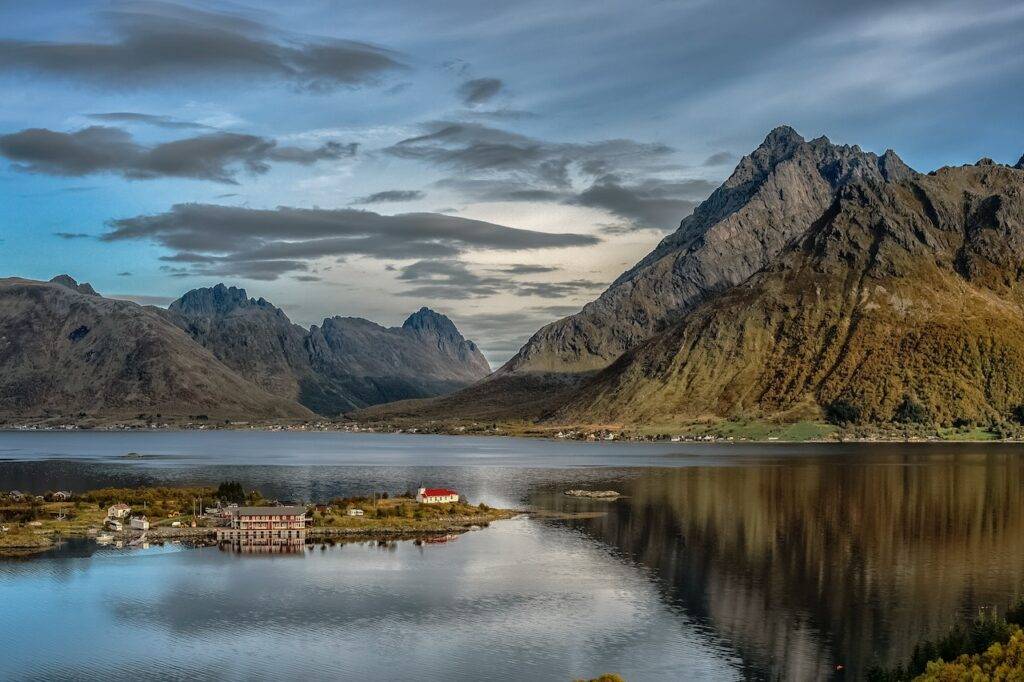
Stø
A bit less than a 3-hour drive from Svolvær (Lofoten), Stø is often dubbed as the place where to go whale-watching in summer.
Over here, you’ll be able to spot sperm whales, but it could also be possible to encounter at least eight other types of whales, including orcas, a natural trend that has been growing in the last few years.
Those who enjoy a close connection with nature and local species can also enjoy bird-watching since, in the same area, Anda Island is a paradise for puffins during the short summers.
Also in Stø, it’s possible to observe several species of seals and dolphins in their natural surroundings.
When is the best time to go whale-watching in Norway?
First of all, it’s important to keep in mind that even though there’s an official whale-watching season in Norway, whale-watching can happen in every season of the year and there are some available tours and organized safaris that run all year round.
However, your chances of spotting one of these big mammals certainly increase during the cold season, roughly from the end of October to the end of January. Winter is also the time of the year when there are more whale safari departures each week, if the weather allows it. For that reason, it’s the best season to visit if you’re dead set on spotting a whale.
This brings us to the next question, i.e.: what species you’ll be able to see and when.
What kind of whales can you spot in Norway?
The whale species that you can spot in Norway are pretty much related to the time of the year you plan to visit.
Normally, three are the most common whale species you can observe: sperm whales, orcas (also known as killer whales), and humpback whales.
As a general rule, the summer months are the best moment to observe sperm whales. In winter, however, fin whales are more common to spot as they might make an unexpected appearance.
Several other different whale species can be seen in the warmer months. They’re mostly the already mentioned humpbacks, but also pilot whales, minke whales, and, of course, orcas. Sometimes, it’s even possible to spot dolphins during a whale-watching safari.
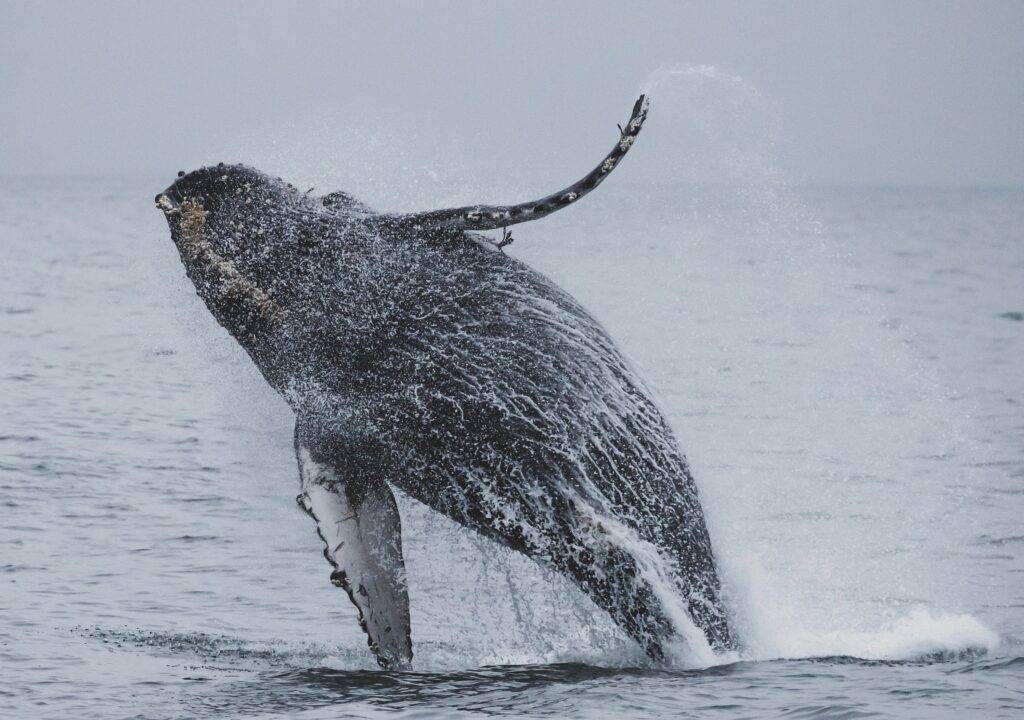
What kind of whale-watching trips and safaris are there?
There are different kinds of whale-watching activities that you can choose from, ranging from coastal whale-watching to private, small boat trips, to bigger whale-watching safaris and cruises.
No matter what option you prefer, always try to choose a company that offers an ethical tour, putting whales’ safety and respect at the center of your encounter. It’s been studied how whales’ behavior changes — even minimally — in presence of vessels, so finding a company that takes this into account is key.
Do some research before booking any experience and try to avoid those that lack a clear and ethical set of guidelines that respect whales and their natural habitat.
As a general rule, look for companies that follow the recommendations published by the International Whaling Commission as well as the Whale and Dolphin Conservation Society.
Look for tour companies that approach the cetaceans in silence and respect their habits and environments.
Less intrusive experiences guarantee a minimum impact on the whales’ behavior, something that you’ll ultimately benefit from as you’ll get to see how these mammals really live and behave.
What companies offer whale watching?
Your choice of tour can make or break your whale watching experience. Here are some of the best reviewed tour operators in Norway, along with one personal recommendation from me.
Hval Safaris
Probably one of the most prestigious whale-watching companies in Norway, with over 30 years of experience in the Andenes area.
This company offers trips on boats that have been specially adapted to offer the best possible experience keeping onboard safety a number one priority for passengers.
Their vessels mount hydrophones, a key piece of equipment that allows the crew to hear underwater sounds and, through echolocation, allow them to track whales and get close to the mammals without using powerful engines that would disturb them or hunt them away.
Relying on their multi-year experience, they also offer a convenient whale guarantee that includes a second free trip on the first available departure if you weren’t lucky enough to find whales during your first experience. If there’s no suitable date available, they’ll even refund the entire price of the ticket.
The company offers experiences in winter and summer, and extra packages including transport, northern lights experiences, accommodation, and more. Tours including photography and whale-watching last from two to five hours, depending on environmental conditions …and finding whales, of course!
Website: whalesafari.no | Price per adult: 1240 NOK (about 120 EUR or 125 USD) | Months of operation: 1 December to 31 March and 25 May to 15 September
The Train Diaries Recommends
This is the trip I took when I went whale watching in Norway, and it’s one I can personally recommend. I took a bit of a risk in planning no overnight stay (combined with a four hour drive from my base in Lofoten), but luckily for me the gamble paid off. During our boat trip we saw four sperm whales and enjoyed an unforgettable close encounter with these gentle giants.
The tour operators were organised and knowledgeable, and before setting sail we had a guided tour in their museum to learn more about what we were going to see. The local guides are true experts on the subject, Many of them are whale researchers or are studying marine biology. They also speak several languages, making it easy for them to share their knowledge and interest in these magnificent marine mammals, no matter where you’re visiting from.
This tour is a great way to spend a day and gives you a unique perspective on these wonderful ocean creatures.
Take a look at the map below to see where Hval Safaris is located, along with some accommodation options should you want to spend the night close by.
Booking.comArctic Explorers Norway
For those interested in whale-watching in Tromsø, this company offers sustainable Artic experiences in the great outdoors of northern Norway.
Thanks to the incredible location, the tours come with a bonus, one of the most impressive natural phenomena on Earth: the northern lights (aurora borealis)!
The company guarantees a sustainable trip, completely off-the-beaten-track, and offers a special guarantee in case you are forced to cancel or change your Artic adventure plans.
One of their most popular trips is the whale-watching RIB (rigid-inflatable boat) tour, which is limited only to up to twelve guests and allows visitors to get really close to the mammals to see them in their natural environment, swimming, hunting, and playing freely at sea.
Website: arcticholidays.org | Price per adult: 2900 NOK (about 305 EUR or 295 USD) | Months of operation: 1 November to 31 January
Booking.comArctic Whale Tours
Offering summer safaris in Stø and winter safaris in Tromsø, the company wants to offer travelers a unique, sustainable experience placing the highlight on environment preservation and minimizing the overall impact that these safaris have on the whales’ environment.
The wildlife-friendly approach includes expert guides and naturalists ready to share with you interesting information and tips to observe marine animals and understand their behavior.
They use medium-sized ships and their tours also include a whale guarantee that allows you to join another tour in the rare case that you fail to spot any whales during the first whale-watching trip.
These tours last between six and eight hours, always depending on weather conditions.
Website: arcticwhaletours.com | Price per adult: From 1200 NOK (about 115 EUR or 122 USD) in summer and 1740 NOK (about 167 EUR or 177 USD in winter | Months of operation: 1 November to 31 January
Booking.comWhat are the chances of seeing a whale? What happens if you don’t?
According to most companies, whale-watching more often has a success rate near 98 %. Of course, this is related to the company you choose, their experience in whale-watching, and the years in business they might have. This is how they make a living, and so there’s a great chance you’ll have a successful whale-watching adventure.
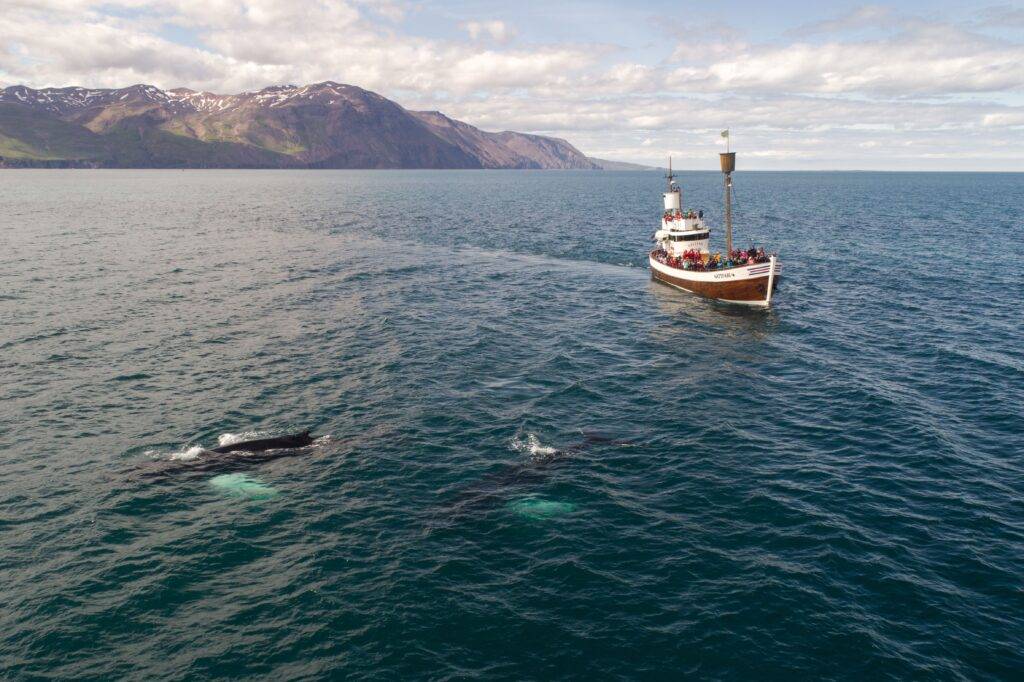
However, it’s wise remembering that this kind of tours deal with nature, animals, wildlife, and even weather conditions, all of them unpredictable factors that may have a decisive role in the outcome of your whale safari.
For that reason, do your research and try to find a tour company that offers some kind of guarantee (whether it is a free second trip or monetary compensation) in case you’re unlucky and see no whale the day of your tour.
What to carry with you for a whale-watching tour?
First and foremost, do not leave home your best photography equipment. Especially if you’re an experienced photographer or are interested in further developing your landscape photography skills, good tele-lenses are key to getting the best images!
Having extra charged batteries and extra SIM cards is a must, while some kind of protection against atmospheric conditions (rain, snow, etc) is also necessary.
Also, include a hat, either for cold or warmer weather — even in summer, it’s still the Arctic Circle! Add sunglasses and sunscreen too as most of the whale-watching activities are done on the deck and, even if you wouldn’t expect it, the sun can also burn in the Artic!
If photography is not your main goal, opt for a good pair of binoculars, this way you won’t miss any detail of the experience.
Depending on your chosen tour, sometimes these trips can be quite long and tiring, add a couple of snacks and plenty of water in your backpack. Finally, don’t forget an extra plastic back to keep any trash inside it and dispose of it once back on the mainland. You don’t want to pollute the whales’ environment.
Norway whale watching: Other tips to keep in mind
It’s a good idea to remember the following tips when planning your whale-watching safari in Norway:
Warm clothes
Winters can be terribly cold in this part of Norway, particularly once you’re off the Norwegian coast, therefore, you’ll need to pack warm clothing specially designed for very cold temperatures.
Rely on thermal wear and technical fabrics that offer better protection against the elements. And don’t forget your feet, wear isolated boots and warm socks. Because nothing can make you more miserable than having cold feet for long hours.
Extra time
Plan for extra time, two or three days if possible, in the area where your trip is supposed to take place. Boats are not allowed to go out in poor weather conditions and on occasions, they can be canceled or postponed if the sea is rough or the sailing conditions do not guarantee the safety of travelers.
In that situation, having a few extra days available will offer a wider chance for you to reschedule your day trip or join another wildlife safari.
Not just through the lens
Whenever you can (or remember), keep your eye away from the viewfinder to take in the whole experience.
Admire the imposing landscape, enjoy the solitude of the seas, and rejoice in the subtle company of one of the most impressive mammals on earth, without feeling the need to capture everything on a camera.
Sometimes, the best experiences we can live are the ones that remain imprinted in our retinas and not on the memory cards of our cameras!
Norway Whale Watching : Pin It!
